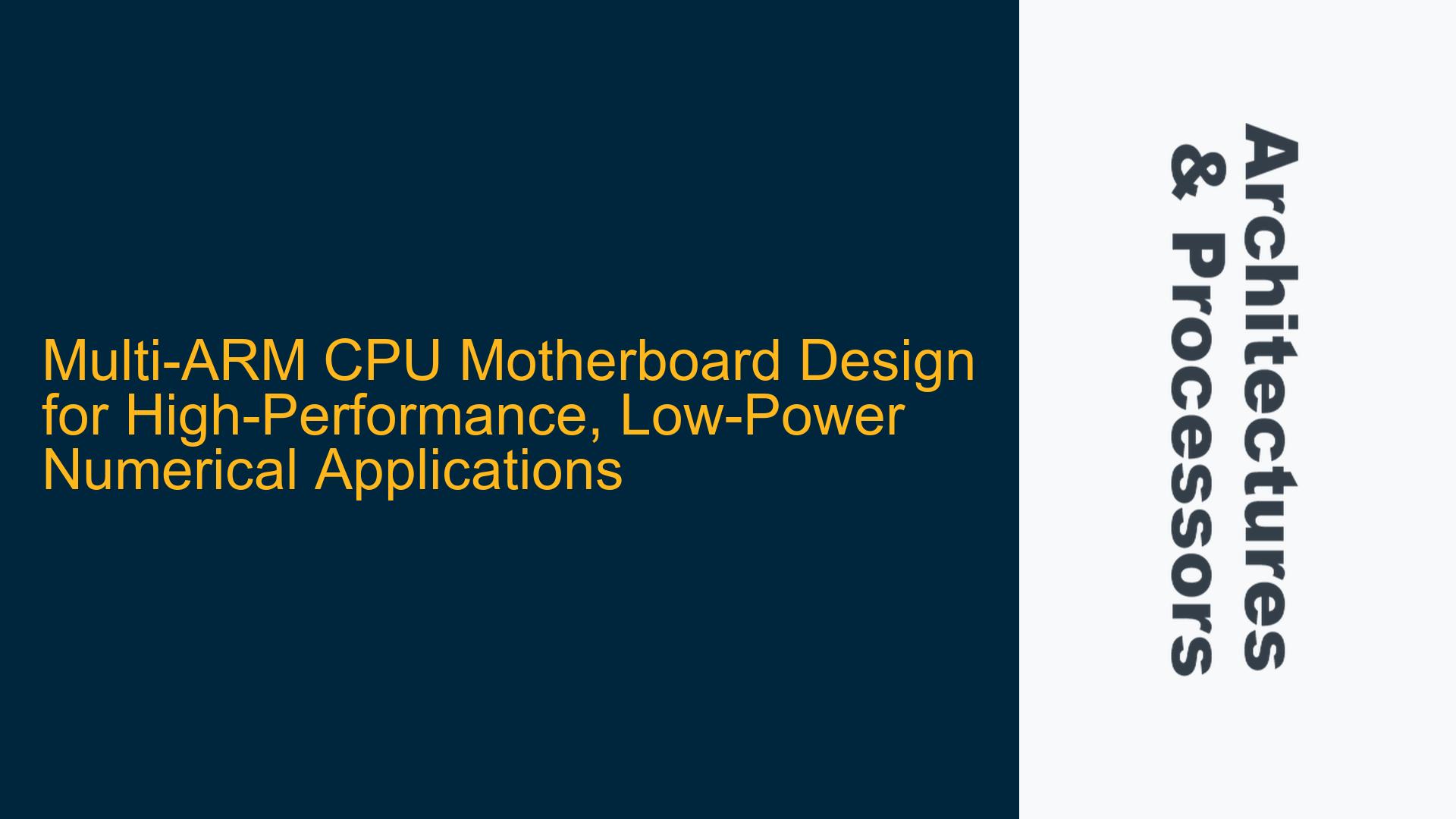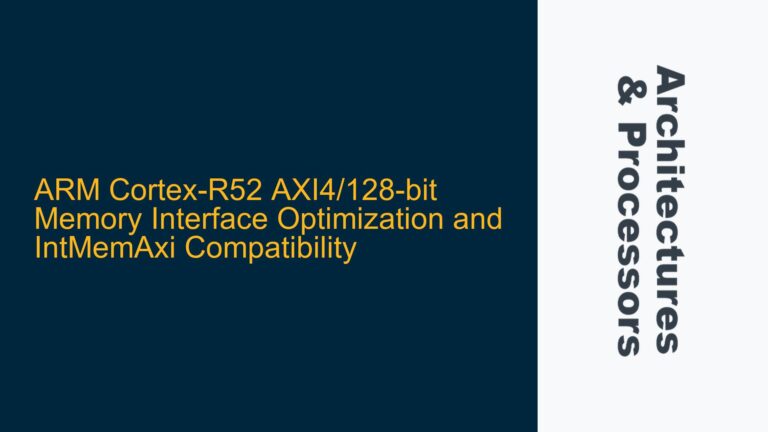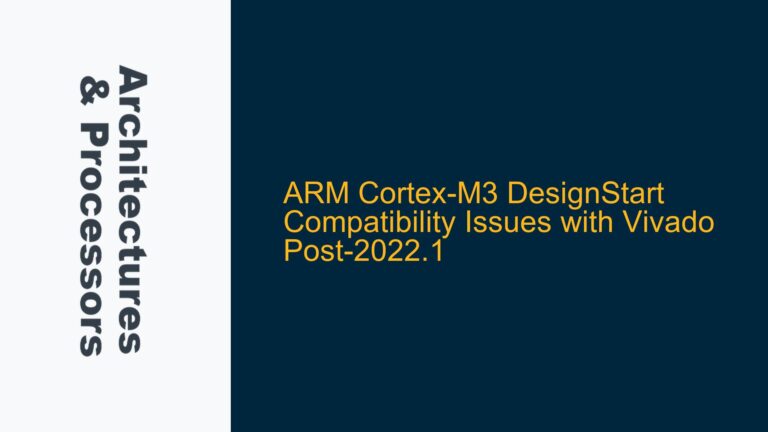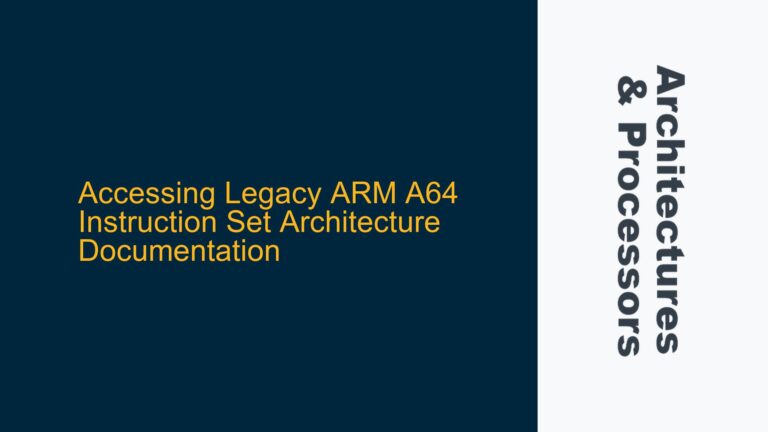ARM-Based Multi-CPU Motherboard Architectures for High Memory and NUMA-Aware Systems
The integration of multiple ARM CPUs on a single motherboard is a complex but increasingly viable solution for high-performance, low-power numerical applications. Unlike traditional x86 architectures, such as Intel Xeon, ARM-based systems require careful consideration of memory architecture, power efficiency, and NUMA (Non-Uniform Memory Access) awareness. The primary goal is to support large memory capacities, often exceeding 8 GB, while maintaining energy efficiency and ensuring seamless Linux kernel support for NUMA.
ARM processors, such as the TI DRA829J-Q1, are designed for embedded and automotive applications, but their memory limitations (up to 8 GB) make them less suitable for memory-intensive numerical workloads. To address this, manufacturers like Ampere and SolidRun have developed multi-core ARM solutions, such as the Ampere Altra and NXP LX2160A, which support higher memory capacities and NUMA-aware operating systems. These processors are designed for server and networking applications, offering a balance between performance and power efficiency.
The challenge lies in designing a motherboard that can accommodate multiple ARM CPUs while ensuring efficient memory access, power management, and thermal dissipation. This requires a deep understanding of ARM’s cache coherency protocols, inter-processor communication mechanisms, and memory controller architectures. Additionally, the motherboard must support high-speed interconnects, such as PCIe and CCIX, to facilitate data transfer between CPUs and peripherals.
Memory Limitations and NUMA Awareness in ARM Multi-CPU Systems
One of the primary issues in multi-ARM CPU systems is memory scalability. ARM processors typically have lower memory limits compared to x86 counterparts, which can be a bottleneck for numerical applications requiring large datasets. For example, the TI DRA829J-Q1 supports up to 8 GB of RAM, which may be insufficient for certain workloads. In contrast, the Ampere Altra supports up to 1 TB of RAM, making it a more suitable option for memory-intensive tasks.
NUMA awareness is another critical factor. In a multi-CPU system, memory access times can vary depending on the physical location of the memory relative to the CPU. NUMA-aware operating systems, such as Linux, optimize memory allocation to minimize access latency. However, this requires hardware support for NUMA, which is not universally available in all ARM processors. The Ampere Altra and NXP LX2160A are examples of ARM CPUs that support NUMA, enabling efficient memory management in multi-CPU configurations.
Power efficiency is also a key consideration. ARM processors are known for their low power consumption, but integrating multiple CPUs on a single motherboard can increase overall power usage. To mitigate this, manufacturers employ advanced power management techniques, such as dynamic voltage and frequency scaling (DVFS) and clock gating. These techniques allow the system to adjust power consumption based on workload demands, ensuring optimal energy efficiency.
Designing a Multi-ARM CPU Motherboard: Key Considerations and Solutions
Designing a motherboard for multiple ARM CPUs involves several technical challenges, including memory architecture, inter-processor communication, and thermal management. Below, we explore these challenges and provide solutions to address them.
Memory Architecture and Scalability
To support large memory capacities, the motherboard must incorporate a high-performance memory controller capable of handling multiple DDR4 or DDR5 channels. The Ampere Altra, for example, features an integrated memory controller that supports up to 8 channels of DDR4-3200, enabling a total memory capacity of 1 TB. This is achieved through the use of registered DIMMs (RDIMMs) and load-reduced DIMMs (LRDIMMs), which reduce the electrical load on the memory bus and allow for higher memory densities.
In addition to memory capacity, the motherboard must ensure low-latency memory access. This can be achieved through the use of advanced memory interleaving techniques, which distribute memory accesses across multiple channels to maximize bandwidth and minimize latency. The NXP LX2160A, for instance, supports 4-channel DDR4-3200 with hardware-assisted interleaving, ensuring efficient memory access in multi-CPU configurations.
Inter-Processor Communication and Cache Coherency
In a multi-CPU system, efficient inter-processor communication is essential for maintaining cache coherency and ensuring data consistency. ARM processors use the ARM CoreLink CCN-502 or CCN-508 interconnect to facilitate communication between CPUs. These interconnects support cache coherency protocols, such as the ARM AMBA 5 CHI (Coherent Hub Interface), which ensure that all CPUs have a consistent view of memory.
The motherboard must also support high-speed interconnects, such as PCIe and CCIX, to enable data transfer between CPUs and peripherals. The Ampere Altra, for example, features 128 lanes of PCIe Gen 4, providing ample bandwidth for high-speed data transfer. Additionally, the use of CCIX (Cache Coherent Interconnect for Accelerators) allows for coherent data sharing between CPUs and accelerators, such as GPUs and FPGAs.
Thermal Management and Power Efficiency
Thermal management is a critical consideration in multi-CPU systems, as the increased power density can lead to higher operating temperatures. To address this, the motherboard must incorporate advanced cooling solutions, such as heat pipes and liquid cooling, to dissipate heat effectively. Additionally, the use of power-efficient components, such as low-power DDR4 memory and high-efficiency voltage regulators, can help reduce overall power consumption.
Power management techniques, such as DVFS and clock gating, are also essential for maintaining energy efficiency. The Ampere Altra, for example, features a sophisticated power management unit (PMU) that dynamically adjusts voltage and frequency based on workload demands. This ensures that the system operates at optimal efficiency, even under heavy computational loads.
NUMA-Aware Operating System Support
To fully leverage the capabilities of a multi-ARM CPU system, the operating system must be NUMA-aware. Linux, for example, includes support for NUMA through the use of the ACPI (Advanced Configuration and Power Interface) SRAT (System Resource Affinity Table) and SLIT (System Locality Information Table). These tables provide the operating system with information about the physical layout of the system, enabling it to optimize memory allocation and minimize access latency.
The motherboard must also support the necessary firmware and BIOS settings to enable NUMA awareness. This includes configuring the memory interleaving settings and ensuring that the ACPI tables are correctly populated. The NXP LX2160A, for example, includes a firmware package that provides full NUMA support, enabling seamless integration with NUMA-aware operating systems.
Reference Designs and Ecosystem Support
For developers looking to design a multi-ARM CPU motherboard, reference designs and ecosystem support are invaluable. Manufacturers such as Ampere and SolidRun provide comprehensive reference designs, including schematics, layout files, and firmware, to simplify the design process. Additionally, the ARM ecosystem includes a wide range of development tools, such as the ARM Development Studio and ARM DS-5, which provide debugging and performance analysis capabilities.
The Ampere Altra, for example, is supported by a robust ecosystem of development tools and software, including the Ampere Developer Platform and the Ampere Optimization Studio. These tools enable developers to optimize their applications for the Altra’s unique architecture, ensuring maximum performance and efficiency.
Conclusion
Designing a multi-ARM CPU motherboard for high-performance, low-power numerical applications is a complex but achievable goal. By addressing key challenges such as memory scalability, inter-processor communication, thermal management, and NUMA awareness, developers can create systems that deliver exceptional performance and energy efficiency. With the support of advanced ARM processors, such as the Ampere Altra and NXP LX2160A, and a robust ecosystem of development tools and reference designs, the future of multi-ARM CPU systems looks promising.






